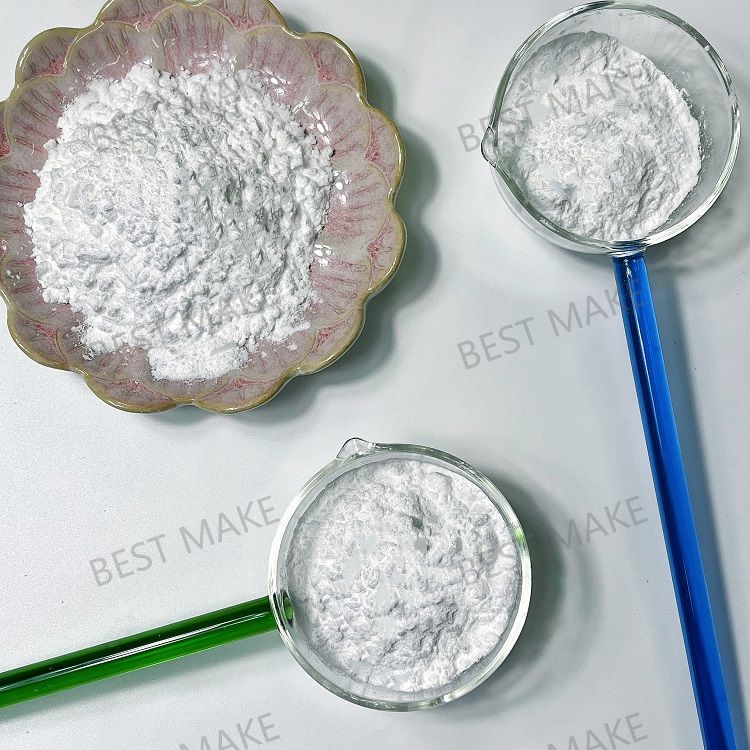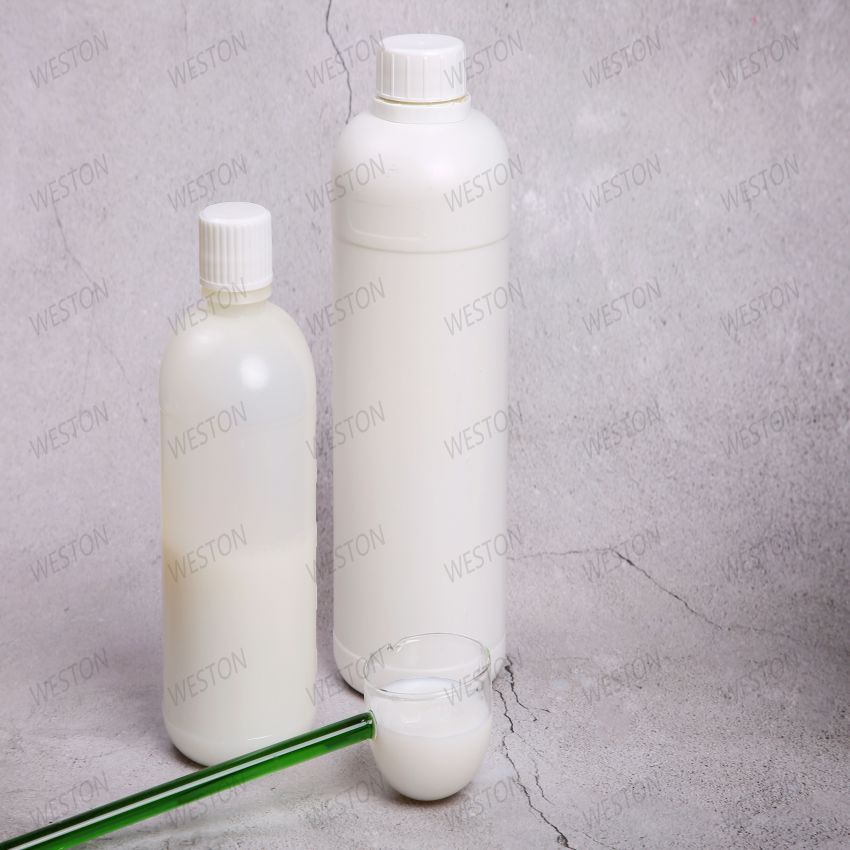-
Categories
-
Pharmaceutical Intermediates
-
Active Pharmaceutical Ingredients
-
Food Additives
- Industrial Coatings
- Agrochemicals
- Dyes and Pigments
- Surfactant
- Flavors and Fragrances
- Chemical Reagents
- Catalyst and Auxiliary
- Natural Products
- Inorganic Chemistry
-
Organic Chemistry
-
Biochemical Engineering
- Analytical Chemistry
- Cosmetic Ingredient
-
Pharmaceutical Intermediates
Promotion
ECHEMI Mall
Wholesale
Weekly Price
Exhibition
News
-
Trade Service
The analysis methods of QNs have also received greater attention, and reports on their analysis methods are increasing
.
In recent years, many articles have specifically reviewed the analysis methods of QNs
11.
1.
4.
1 Pre-processing method
(1) Extraction method
QNs residue analysis mainly adopts liquid-liquid extraction (LLE) extraction method
.
In recent years, some new extraction technologies, such as Ultrasonic Assisted Extraction (UAE), Accelerated Solvent Extraction (ASE), Microwave Assisted Extraction (MAE), Supercritical Fluid Extraction (SFE), Dispersive Liquid Liquid Microextraction (DLLME), etc.
QNs are amphoteric compounds, insoluble in non-polar solvents, soluble in polar organic solvents and water-soluble organic solvents or acidic and alkaline aqueous solutions
.
In the process of tissue sample extraction, operations such as shaking are usually used, and sometimes methods such as ultrasound and homogenization are also used.
1) Liquid liquid extraction (LLE)
Since QNs are acid-base amphiphilic substances, the LLE method adjusts the pH of the aqueous phase to transfer the analyte from one phase to the other, thereby achieving the extraction of the analyte
.
Tyczkowska et al.
Chloroform, dichloromethane, ethyl acetate, etc.
are commonly used as solvents for LLE.
The buffer can also be combined with chloroform or dichloromethane for extraction and purification of QNs.
Sometimes NaCl can be added to enhance the ionic strength of the solvent and further improve QNs.
The transfer efficiency in the organic phase, but the processing process is complicated, time-consuming, and requires a large amount of organic solvents
.
Ethyl acetate is suitable for the extraction of QNs in a variety of matrices, especially the extraction of first and second generation QNs (such as OXO, FLU, etc.
Schneider et al.
used the LLE method to purify CIP, ENR, DAN, SAR, DIF, NOR, ORB and desethylene ciprofloxacin (desethylene ciprofloxacin) in chicken tissues
.
Add 3 mL of acetonitrile and 0.
2) Ultrasound-assisted extraction (UAE)
UAE is the use of strong mechanical vibration, perturbation effect, emulsification, diffusion, crushing and agitation generated by ultrasonic radiation pressure.
The effect increases the frequency and speed of the movement of material molecules, increases the penetration of the solvent, and accelerates the entry of the target component into the solvent.
, To promote the extraction
.
The advantages are fast extraction speed, low price and high efficiency
3) Supercritical fluid extraction (SFE)
SFE is a new separation and extraction technology that uses supercritical fluid as the extractant to separate and extract the required components from various samples with complex components
.
The nature of supercritical fluid is between gas and liquid.
4) Dispersive liquid liquid microextraction (DLLME)
In DLLME, a suitable mixed solvent of dispersant and extractant is quickly injected into the sample solution through a micro-injector.
The extraction solvent is dispersed in the solution in the form of droplets to form a turbid solution.
At this time, the target analyte in the sample solution is extracted Into the extractant droplets
.
Then, the phase separation is achieved by centrifugation, and the extractant enriched with the target analyte is deposited at the bottom of the solution
.
Finally, use a micro-injector to pipette the sedimentary phase into the chromatographic instrument for analysis and detection
.
The DLLME method is simple, fast, low-cost, and has a large enrichment factor.
It has been successfully applied to the analysis and detection of a variety of trace organic compounds
.
Tsai et al.
established the DLLME method to purify SAR, DAN, NAL, OXO, ENR, FLU and piperidine in pig muscle tissue
.
Put 5g tissue in a 50mL centrifuge tube, add 5mL acetonitrile (containing 50μL 70%~72% perchloric acid), after homogenizer homogenize, add 2g anhydrous magnesium sulfate and 1g sodium chloride , shake and mix for 1min, 10000r/min Centrifuge for 4 min, take 1.
5 mL of the upper acetonitrile solution (as the dispersing solvent) containing 300 μL of dichloromethane (as the extraction solvent) and quickly inject it into a 10 mL test tube with 7.
5 mL of pure water, vortex and mix for 30 seconds, centrifuge at 3000 r/min for 4 min, and use a 1 mL syringe Transfer the clear solution to the vial, wash the syringe twice with a small amount of methanol, put the washing solution into the same vial, blow dry with nitrogen at 40℃, 500μL water-acetonitrile-perchloric acid (70%~72%) mixed solution (10+2+88) , V/v/v) reconstituted, passed through a 0.
45μm filter membrane, and analyzed by HPLC
.
The method recovery rate and LOD were 93.
0%~104.
7% and 5.
6~23.
8μg/kg, respectively
.
Moema et al.
used the DLLME method to extract 6 types of QNs in chicken liver samples
.
The type and amount of dispersant, the type and amount of extractant, the concentration and composition of phosphoric acid in the dispersant, pH and other parameters have been optimized, and HPLC analysis after purification
.
The linear range is 30~500μg/kg, the correlation coefficient range is 0.
9945~0.
9974; the standard deviation (SD) is 4%~7%, and it is added and recovered at three concentration levels (50μg/kg, 100μg/kg and 300μg/kg) The rate is 83%~102%; LOD and LOQ are 5~19μg/kg and 23~62μg/kg respectively
.
Alexandra et al.
established the DLLME-UPLC-MS/MS method to detect 17 kinds of QNs and 14 kinds of β-lactam drugs (penicillin and cephalosporin) in raw milk, and carried out the method according to the EU resolution 2002/547/EC Verification
.
The extraction efficiency of DLLME depends on many parameters, such as the nature of the extract and the dispersing solvent, volume, pH, salt concentration, stirring time and centrifugation time
.
Use multivariate optimization method to accurately optimize these variables
.
The Plackett-Burman design selects the most influential parameters, and the Doehlert design obtains the optimal conditions and applies the conditions.
The target components are extracted with two different pHs (acidic QNs and β-lactams have a pH of 3, and other QNs have a pH of 8.
), using matrix matching standard curve quantification, amoxicillin LOQ is 0.
3ng/g, CIP is 6.
6ng/g, CV is less than 15%, detection limit (CCa) is 4.
1~104.
8ng/g, detection capacity (CCβ) It is 4.
2~109.
7ng/g, these values are very close to the MRL of the target drug in this study, and the recovery rate is 72%~110%
.
5) Microwave-assisted extraction (MAE)
MAE is a method of selectively extracting target components in materials by using the characteristics of microwave heating
.
It heats some polar solvents by adjusting the parameters of microwave heating, using the characteristics of polar molecules that can quickly absorb microwave energy, and microwave heating of the sample, which can effectively heat the target component to facilitate the extraction and separation of the target component
.
Because microwave heating uses molecular polarization or ionic conduction effects to directly heat the substance, and it is heated from inside and outside, it has high thermal efficiency, rapid and uniform heating, greatly shortens the extraction time, and improves the extraction efficiency
.
Hermo et al.
compared the traditional extraction method and MAE to extract QNs from pig muscle tissue
.
The experimental results show that MAE has a better purification effect, less impurity interference, and can obtain slightly lower LOD and LOQ than traditional extraction methods
.
Xu Haoyan established the MAE method for QNs residues
.
Place 5.
0g chicken muscle sample in a 50mL PTFE microwave tank, add 7.
5mL water to homogenize, add 17.
5mL 0.
3% acetonitrile phosphate, 25mL n-hexane, microwave 60℃, 15min, centrifuge at 4500r/min for 10min, Collect the supernatant in a 50 mL separatory funnel
.
The centrifuged chicken residue was rinsed with 5 mL 0.
3% phosphoric acid acetonitrile solution, and the supernatants were combined
.
After the supernatant was dried with N2 at 50°C, the volume was constant with 2 mL of mobile phase, and after passing through a 0.
45 μm microporous membrane, the liquid chromatography-tandem mass spectrometry (LC-MS/MS) determination was performed
.
The method recovery rate was 66%-97.
2%, the intra-day and inter-day SD were 0.
95%-10.
4% and 3.
8%-13.
6%, respectively, and the LOD was 2.
7-6.
7ng/g
.
6) Accelerated solvent extraction (ASE)
ASE uses the special physical and chemical properties of the solvent at a constant temperature and pressure to extract solid and semi-solid materials.
It is also called pressurized liquid extraction (PLE) and pressurized fluid extraction ( pressurized fluid extraction (PFE) or enhanced solvent extraction (ESE)
.
This method has the characteristics of fast speed, less solvent usage, and good repeatability
.
Li Wenhui and others used ASE to extract QNs (OFL, NOR, CIP, SAR, FLE, LOM, DIF, ENR), sulfonamides and macrolides from fish
.
The grass carp and other samples are peeled, deboned, chopped, homogenized, freeze-dried, and ground evenly in a mortar
.
Weigh 0.
10g dried fish sample, add 1.
5g diatomaceous earth and mix evenly, spread a 1cm thick layer of diatomaceous earth on the bottom of the extraction tank (34mL), fill the mixed sample into the extraction tank, and add 20ng substitute
.
Extraction conditions: pressure 10.
34MPa, temperature 70°C, static extraction time 5min, flushing solvent volume 60% of cell volume, nitrogen purge time 120s, static cycle 2 times
.
Place the extraction cell on the ASE350 for heating and pressure extraction
.
The collected extract was transferred to a heart-shaped flask, and was rotary evaporated in a 37°C water bath vacuum until there was no more distillate
.
Add 100 mL of ultrapure water to the heart-shaped bottle to dissolve the extract, vortex and shake, and then clean the HLB solid phase extraction column.
The drug is separated on the C18 column and detected by LC-MS/MS
.
The recovery rates of 22 kinds of QNs, sulfonamides and macrolide antibiotics were 66%~120%, RSD were 0.
7%~16%, and method LOD was 0.
02~0.
6μg/kg
.
Rodriguez and others used PLE to extract NOR, CIP, LOM, DAN, ENR and SAR in baby food
.
The extraction solution is acetonitrile ~50mmol/L pH3.
0 phosphoric acid solution (80+20, v/v), the extraction temperature is 80°C, the extraction pressure is 2000psi, the static extraction time is 5min, and the static cycle is 3 times
.
Results The recovery rate of QNs was 69%-107%
.
Herranz et al.
used PLE to extract CIP, SAR and ENR from edible eggs
.
The extraction solution is acetonitrile-50mmol/L pH3.
0 phosphate solution (50+50, v/v), and the extraction conditions are set to pressure 1500psi, temperature 70℃, static extraction time 5min, washing solvent volume is 50% of the pool volume, Static cycle 3 times
.
Results The recovery rate was 67%-90%, the RSD was less than 17%, the CCa was 17-24 ng/g, and the CCβ was 30-41 ng/g
.
Yu et al.
used ASE to extract 15 kinds of QNs (MAR, ENO, FLE, OFL, PEF, LOM, DAN, ENR, ORB, CIN, DAT, SAR, DIF, NAL and FLU) from animal-derived foods, optimizing the extraction temperature and pressure , ASE number of times
.
After extraction, it was cleaned up with Oasis HLB column, and determined simultaneously by HPLC and LC-MS/MS
.
When the additive concentration is 10 ~ 800 μg/kg, the recovery rate of QNs in pig and cattle muscle, liver and kidney, chicken and fish samples determined by HPLC ranges from 70.
6% to 111.
1%, and the RSD is less than 15%; in the HPLC method The LOD and LOQ of 15 kinds of QNs were 3μg/kg and 10ug/kg, respectively, while in the LC-MS/MS method they were 0.
3ug/kg and 1μg/kg, respectively
.
Related link: Maximum allowable residue limits for quinolones







